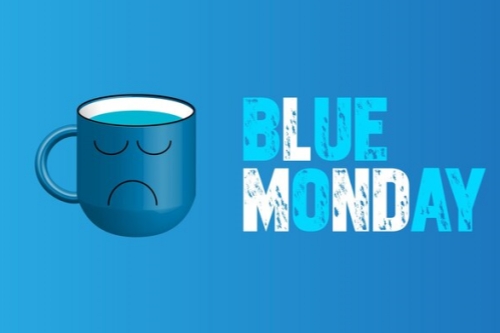By Adam Hayes
What Is a Business Plan?
A business plan is a document that details a company’s goals and how it intends to achieve them. Business plans can be of benefit to both startups and well-established companies. For startups, a business plan can be essential for winning over potential lenders and investors. Established businesses can find one useful for staying on track and not losing sight of their goals. This article explains what an effective business plan needs to include and how to write one.
Understanding Business Plans
Any new business should have a business plan in place prior to beginning operations. In fact, banks and venture capital firms often want to see a business plan before they’ll consider making a loan or providing capital to new businesses.
Even if a business isn’t looking to raise additional money, a business plan can help it focus on its goals. A 2017 Harvard Business Review article reported that, “Entrepreneurs who write formal plans are 16% more likely to achieve viability than the otherwise identical nonplanning entrepreneurs.”
Ideally, a business plan should be reviewed and updated periodically to reflect any goals that have been achieved or that may have changed. An established business that has decided to move in a new direction might create an entirely new business plan for itself.
There are numerous benefits to creating (and sticking to) a well-conceived business plan. These include being able to think through ideas before investing too much money in them and highlighting any potential obstacles to success. A company might also share its business plan with trusted outsiders to get their objective feedback. In addition, a business plan can help keep a company’s executive team on the same page about strategic action items and priorities.
Business plans, even among competitors in the same industry, are rarely identical. However, they often have some of the same basic elements, as we describe below.
Important: While it’s a good idea to provide as much detail as necessary, it’s also important that a business plan be concise enough to hold a reader’s attention to the end.

How to Write a Business Plan
While there are any number of templates that you can use to write a business plan, it’s best to try to avoid producing a generic-looking one. Let your plan reflect the unique personality of your business.
Many business plans use some combination of the sections below, with varying levels of detail, depending on the company.
Common Elements of a Business Plan
The length of a business plan can vary greatly from business to business. Regardless, it’s best to fit the basic information into a 15- to 25-page document. Other crucial elements that take up a lot of space – such as applications for patents – can be referenced in the main document and attached as appendices.
These are some of the most common elements in many business plans:
Executive summary: This section introduces the company and includes its mission statement along with relevant information about the company’s leadership, employees, operations, and locations.
Products and services: Here, the company should describe the products and services it offers or plans to introduce. That might include details on pricing, product lifespan, and unique benefits to the consumer. Other factors that could go into this section include production and manufacturing processes, any relevant patents the company may have, as well as proprietary technology. Information about research and development (R&D) can also be included here.
Market analysis: A company needs to have a good handle on the current state of its industry and the existing competition. This section should explain where the company fits in, what types of customers it plans to target, and how easy or difficult it may be to take market share from incumbents.
Marketing strategy: This section can describe how the company plans to attract and keep customers, including any anticipated advertising and marketing campaigns. It should also describe the distribution channel or channels it will use to get its products or services to consumers.
Financial plans and projections: Established businesses can include financial statements, balance sheets, and other relevant financial information. New businesses can provide financial targets and estimates for the first few years. Your plan might also include any funding requests you’re making.
Tips: The best business plans aren’t generic ones created from easily accessed templates. A company should aim to entice readers with a plan that demonstrates its uniqueness and potential for success.
Two Types of Business Plans
Business plans can take many forms, but they are sometimes divided into two basic categories: traditional and lean startup. According to the U.S. Small Business Administration (SBA), the traditional business plan is the more common of the two.
Traditional business plans: These plans tend to be much longer than lean startup plans and contain considerably more detail. As a result, they require more work on the part of the business, but they can also be more persuasive (and reassuring) to potential investors.
Lean startup business plans: These use an abbreviated structure that highlights key elements. These business plans are short – as short as one page – and provide only the most basic detail. If a company wants to use this kind of plan, it should be prepared to provide more detail if an investor or a lender requests it.
Why Do Business Plans Fail?
A business plan is not a surefire recipe for success. The plan may have been unrealistic in its assumptions and projections to begin with. Markets and the overall economy might change in ways that couldn’t have been foreseen. A competitor might introduce a revolutionary new product or service. All of this calls for building some flexibility into your plan, so you can pivot to a new course if needed.
How Often Should a Business Plan Be Updated?
How frequently a business plan needs to be revised will depend on the nature of the business. A well-established business might want to review its plan once a year and make changes if necessary. A new or fast-growing business in a fiercely competitive market might want to revise it more often, such as quarterly.
What Does a Lean Startup Business Plan Include?
The lean startup business plan is an option when a company prefers to give a quick explanation of its business. For example, a brand-new company may feel that it doesn’t have a lot of information to provide yet.
Sections can include: a value proposition; the company’s major activities and advantages; resources such as staff, intellectual property, and capital; a list of partnerships; customer segments; and revenue sources.
The Bottom Line
A business plan can be useful to companies of all kinds. But as a company grows and the world around it changes, so too should its business plan. So don’t think of your business plan as carved in granite but as a living document designed to evolve with your business.
Source: https://www.investopedia.com/terms/b/business-plan.asp















